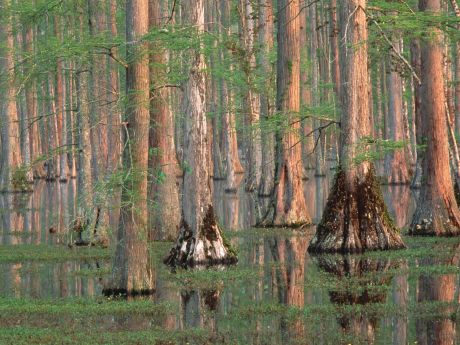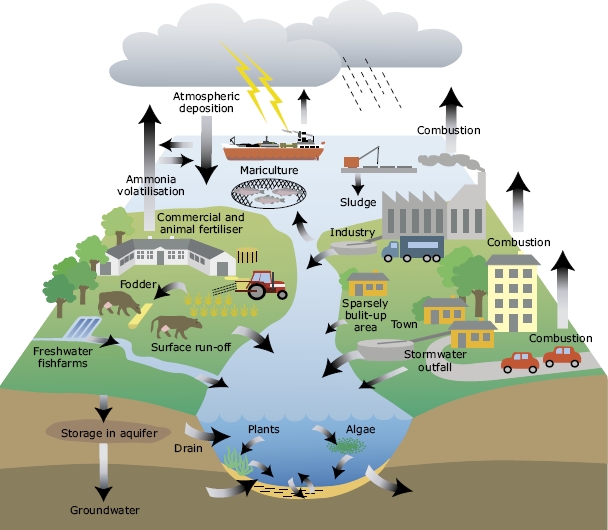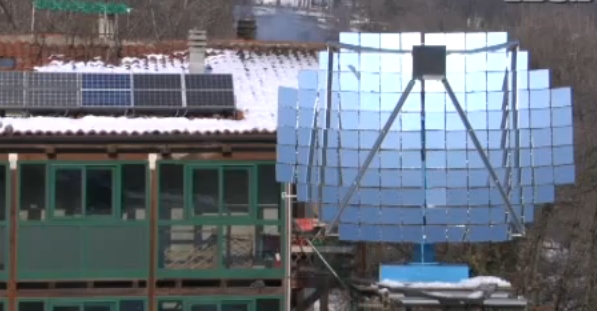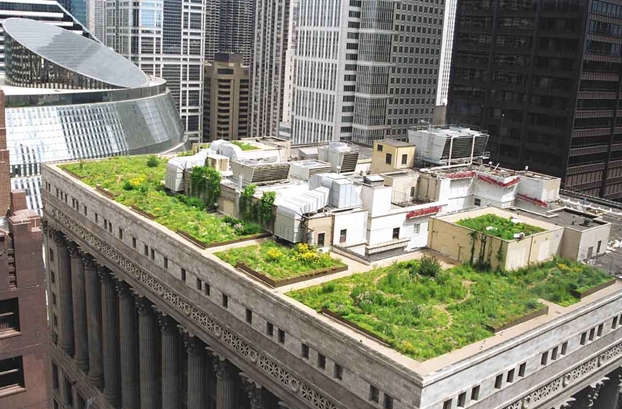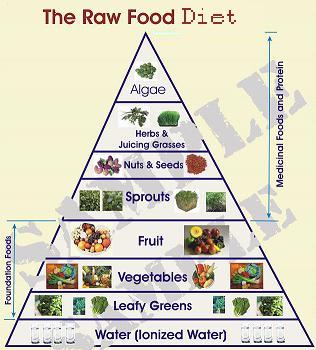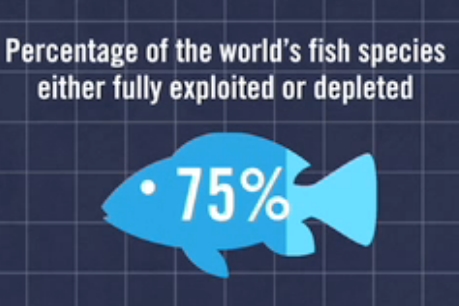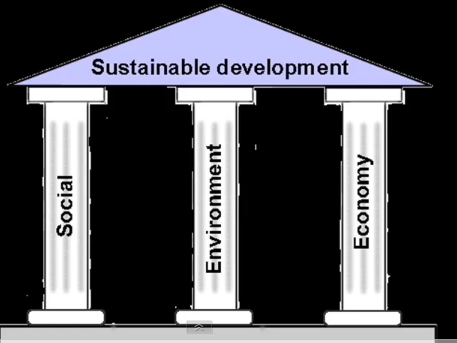|
Eco housing
Hemp Production
Organic Raw Food Nutrition
Curriculum
Banking Reform
Sustainable Farming
|
Our precious planet
"Why use up the forests which were centuries in the making and the mines which required ages to lay down, if we can get the equivalent of forest and mineral products in the annual growth of the hemp fields?" - Henry Ford
Sustainable development design systems ensure the Bio diversity and life support for healthy ECO systems. Healthy ECO systems translate to our health and future survival, simply because human beings are a smaller aspect of a larger ecology.Unsustainable development began when the conception of progress was defined as industrial growth and economic expansion. The education system and public relations campaign promoted "consumption".Corporate priorities were allocated to profit through what can only be described as "inappropriate technologies".Through systems, manufacturing and construction that today still causes acid rain , ozone depletion, climate change and leaves a toxic aftermath that PERMANENTLY effects humans and Eco immune systems.
These particular externalities have remained intrinsic to a design model of modern "development" and are still currently colonizing the worlds cultures and environment. The present curricular still reflects this choice of industry technology despite the renewable alternatives being available. This industry is recognized as reliant on non renewable raw materials and resource capital (forest and fossil fuels for example) other than the renewable alternatives. These alternative design systems will be covered in great detail in this section.
This inferior design system continues to create the unnecessary demand of non renewable resources and energy whilst producing excessive waste and pollution downstream. The design, construction and management of the built environment (cities, buildings,landscapes and products) is central to this industrial system because it largely determines the amount of resources, space and energy consumed by this "development". The unnecessary and artificial demand of this industry creates exploitation of the inhabitance of other countries and of their natural resources. The "west" is exploited under this unsustainable system, however it is at different degrees then cheaper labor in other less developed countries.
Counter productive design systems in comparison to the alternatives described in this section
The present EDUCATION on design systems is a gross mismanagment of resources. Apart from damaging our's and the next next generations health and quality of life, unregulated economic forces and development interests continue to transform city scapes into inhumane environments. This built environment has derived design of "for and by" the "industrial profit order", rather then "of and by" its inhabitants. So much so that today even where urban designers have attempted to create isolated pockets for people to enjoy natural landscapes or public spaces, the quality of these experiences are cumulatively destroyed by over development, with its congestion, noise, pollution and other stresses.
Independent, self sufficient, sustainable communites are not only possible but are presently operating.These sustainable alternative design solutions can be progressively implemented for "change over" to the built environment but must be regulated to be enforced and will require a degree of public participation for any real time progress.
The above example is of Damanhur a sovereign Eco Village society using regional currency. Their monetary system is based on ethical values of co-operation and solidarity. It will not suffer inflation or a financial crash and all the benefits remain in the community. The regional currency system has long provided economic stability, even in the great depression. However Regional currency is not educated to capcity.
Sustainable development is DESIGN protocol involving a social, economic and environment that meets the needs of the present without compromising the ability of future generations to meet their own needs.This is not a new concept. The native American Iroquois confederacy has a tenet it mandates its chiefs to follow, one to which people today are now paying attention too:It simply states that a chief must consider how each of his actions will affect his descendants seven generations into the future. At present the goals of this design protocol are being sort after by the United Nations and are implied by governments. However none of the alternatives listed in this section that can reach these goals are in use to capacity.
These alternatives design SOLUTIONS are a transdisciplinarity process, intended for professionals to work across the boundaries of academic disciplines, social, ecological psychological, economic and political areas. The end goal is to communicate in many languages, be it legal numerical, conceptual, aesthetics with collaborators and decision makers from different perspectives and backgrounds.Avoid or reduce negative impacts of projects on all levels -site specific , regional and global. Understand how philosophical underpinnings of design influence their decisions. Integrate different practical parameters, functional and ecological requirements, social needs, cultural values and economic constraints.
Sustainable Permaculture farming -Healthy and sustainble soils with sustainable community DESIGN.
These design systems are present and can achieve new social goals , while dislodging existing social, economic and political impediments to sustainability. From the design of product components to complex urban change over developments. These Eco solutions involve not just technical but the social, cultural, economic and political dimensions. Ethical concepts, epistemologies and public policy issues that designers , environmental professionals need to consider in their professional practice or activist roles.
By using these design solutions, everyone can be living in buildings and settlements that are more like gardens than cargo containers, systems that purify air and water, generate energy, treat their own sewage and produce food - at a lower cost. This section presents inspiring and detailed examples of integrated systems and design thinking that is not regulated or covered to capacity in the mainstream curricular.Applications in industrial design, materials, housing design, urban planning, transport, landscape, agriculture, energy and resource use.
Green Roofing Reality- Eco Urban change over design with many advantages.
The need for public participation to help enforce these solutions must be illistrated. These sustainable design alternatives are not only well known today but most of them have been in use before the industrial "growth" expansion period. One example can be found in the paper making process from non illegal Industrial HEMP.
Producing pulp and paper casts an ecological shadow far beyond its impact on the world's forests. Converting trees into paper uses large amounts of water, energy, and chemicals and generates vast amounts of air and water pollution.The pulp and paper industry is the fifth largest consumer of energy, accounting for 4 percent of all the world's energy use.The pulp and paper industry uses more water to produce a ton of product than any other industry.Consumers continuing to participate in this method will play a pivotal role in reshaping the future, 40 percent of office paper still ends up in overburdened landfills.
Making paper from non illegal industrial Hemp not only prevents further deforestation but also requires no bleaching, and so does not poison the water with dioxins or chlorine like tree paper mills do. The chemicals involved in making Hemp paper are much less toxic.Making paper from Hemp could also eliminate erosion due to logging, reduces topsoil loss, and water pollution caused by soil runoff.One acre of hemp can produce as much paper as 4 to 10 acres of trees over a 20-year cycle, hemp stalks only take four months to mature, whereas trees take 20 to 80 years.
This information was known in 1916, according to a USDA report.
NEGLECTED -Environmental, renewable, reusable and recylcable HEMP Paper
Hemp paper can also be recycled more often, though this fact is not of much value, since hemp is a reusable resource. 90% of the worlds paper manufactured before 1883 was made from hemp, including the Gutenberg Bible and the first two drafts of the American Declaration of Independence. The novels of Mark Twain were all printed on hemp paper.It is safe to say it has been known for a while.
This is the most carbon negative solution for making paper in the world, not to mention the least impact on the air, water and soil. Yet why is there not one major newspaper in the world regulated to make use of it?
Industrial hemp production can produce up to 20,000 renewable carbon negative products. Basic necessities of life like: Food—seeds, oil, flour, medicine—salves, anti-nausea,toiletries—soap, shampoo, lotion,textiles—clothing, towels, bedding, canvas,household products—carpet, detergent, paint, toys,industrial products—paper, building materials including concrete, insulation, fuel, car parts.
Hemp can even replace plastic with the most carbon negative result. How can the "cap and trade" or "carbon tax" be used any more effectively other than being automatically financed or invested for paper making or any industry to change over to renewable industrial hemp production.Renewable hemp produciton addresses the concept of ‘needs,’ in particular the essential needs of the world’s third world countries, to which overriding priority must be given; and the idea of limitations imposed by the state of technology and social organization on the environment’s ability to meet present and future needs.
There is no other method that can be followed to minimize the consumption of resources, select lower environmental impact resources, optimize product life span, extend the life of materials, and design for disassembly.The carbon "tax" legislation remains unchanged and cannot match this solution or material choice. This is one DESIGN solution NEEDED to create sustainble development, and at the very least needs public signitures to help implimentation. The Panacea online signitures are easy, a simple name email and country is only required. Panacea's Hemp production program also requires participation by farmers and educational groups- Visit Panacea's Hemp production Page
New city buildings and housing developments threaten ecosystems by over-exploitation of resources, and there is an urgent imperative to evaluate trade-offs between immediate and long-term human needs and to take action to protect bio diversity, which is a key factor in delivering ecosystem services.A reform and new regulation of the building code to use ECO housing design and materials is the only long term solution.
Living organisms are the most efficient systems we know. We can only imitate their design systems, we cannot "re invent the wheel" so to speak. In living systems there can be no distinction between the elements necessary for life. They are efficient because they are integrated and honed to be as economic as possible with the materials from which they are made, substances like air,water and nutrients needed for life. like Arboreal tissues , their components perform two or more functions simultaneously , this kind of economical efficiency is possible in ECO building protocol.
The WorldsNest self sufficient ECO housing educational project
The building and housing code regulations must reflect the function of the Eco building designs to have real human well being in their capacity -These Carbon negative, zero carbon ECO housing buildings codes and higher education can only come into play in real time by public participation or public pressure. Panacea's easy name email and country petition signing on our ECO housing page is an essential START.If you are intent on building a carbon zero or negative carbon Eco house or building, you should have all the incentive and encouragement available. The building code regulations must enforce this.Panacea's educational drive for ECO housing design solutions can be found in our ECO Housing design section.
“Conserving,” “preserving,” and “protecting” define sustainable living. Design systems are the only way to help improve the quality of the air we breath and preserve the water we drink. These design systems are needed to safely treat and dispose of waste, and recycle as much as possible. “Conserving,” “preserving,” and “protecting” our HEALTH through nutrition is part of this process. Organic food and organic raw whole food nutrition protects against disease. This is not currently taught in the curricular. However thousands of people throughout the world have maintained successful weight losses and healed themselves of a many diseases through ORGANIC raw whole food nutrition.
Diabetes
Further proof of the medicial capacity of raw foods can be found in Don Tolman's Farmacist Desk Reference (FDR) on wholefoods. You do not need "Big Pharma" drugs to cure most diseases. Raw Whole food nutrition has already prevented and cured diseases such as cancer, heart disease and many others. Here is a partial list which can be verified through Don's RAW whole food system.
Acid reflux, acne, age-related muscular degeneration, ageing, arthritis, atherosclerosis, CANCER, cataracts, high cholesterol, colds, constipation, diabetes, diarrhea, poor digestion, diverticular disease, headaches, heart disease, herpes simplex, hemorrhoids, hypertension, immune deficiency, infection, infertility, insomnia, mental slowness, menopause, motion sickness, obesity, osteoporosis, respiratory ailments, skin disease, stroke, ulcers, varicose veins.
The population continues to suffer from many health problems due too processed foods, genetically modified food, food additives and poor nutrition. Most do not realize how they are Toxic. Preventing disease has never been easier.Organic raw whole food nutrition needs to make it way into the curricular TO PREVENT DISEASE and improve public health. The educational resources needed for this task can be found in our organic raw food nutrition section.
Inflation, the financial crash and the unstable debt based monetary system can be reformed.There are proven regional currency systems and community credit banking methods that are already in effect which are not suffering from these elements. There is even science to prove that interest free, fee free loans can be created.
However governments and the curricula are not educating these baking reform methods. It is for this reason that there are no real solutions offered by them to the finacial crash.You can find banking reform education and help reform this system by visiting our Banking reform section.
Sustainable farming is the only way to preserve the next generations future.There are efficient methods to get fresh organic foods to urban communities and create local food co-ops, farmers markets whilst educating and informing the public about land and wildlife conservation.These design solutions are easy efforts and programs in which people can get involved. Biodynamic , Permaculture and Urban Orgnaic Aquapoinics are the three systems which produce the most carbon negative food production in the world. An organic grow system like Aquaponics can transform the urban landscape (empty buildings for example) and produce carbon negative food production. This system is already well in effect and providing these benfits but not operating to capacity.
Biodynamic farming and Permacuture are the only sustainable farming methods which can repair the soil and ensure carbon negative food production that does not negatively effect Eco systems or our health.
These methods can also produce sustainable local food production, you can find Panacea's educational drive on our sustainable farming page (under contruction) .
To address the growing concerns and fears of the general public, many environmental laws were enacted in the 1970s and 1980s. It is evident that today none of these laws have impacted today.There have since been many activist films which have produced the only efforts to police these goals. Yet still we do not have the best result the laws and activist intended to secure. A recall, amendments and higher education on these very regulations can only achieve this goal. This requires at the basic level public perception, legislative support and the easy petition signing provided on Panacea's sustainable devlopment pages.
All these educational amendments are planned to be used to help policy makers and environmental consultants working in this field or related areas set up numerous job opportunities for these design solutions. This will be for people with any educational background, any skills, and talent.Panacea also intends to use these design systems to help restructure the school curricular.While in high school, life skills involve taking classes in sustainable development.For this task we need more volunteers and aid.
Educational facts like the story of stuff are criticaly needed amendments to help reform the education system. From its extraction through sale, use and disposal, all the stuff in our lives affects communities at home and abroad, yet most of this is hidden from view. The Story of Stuff is a 20-minute, fast-paced, fact-filled look at the underside of our production and consumption patterns. The Story of Stuff exposes the connections between a huge number of environmental and social issues, and calls us together to create a more sustainable and just world. It'll teach you something, it'll make you laugh, and it just may change the way you look at all the stuff in your life forever.-Refernce
This brilliant factual assesment educates how the average consumer does not understand the toll the industry materials are taking on the planet and of them selfs.Schools are also not taught that:Quote- Eco systems are the planets life support systems; they keep you and all other forms of life alive and healthy. To ensure our own health, we need to respect and care for our health of the living planet. By taking the following actions you will be contributing to the livelihood of every species on the planet- including you. Healthy Eco systems - Healthy people Our heath depends upon healthy eco systems to supply clean water, food, a stable climate timber, fibre , wood , and fuel. Food and agriculture- Bio diversity plays a vital role in food production and good nutrition,healthy eco systems are maintained by a huge variety of species carrying out tasks which promote fertile and healthy soils, crop pollination, natural pest control, abundant fish and sea life.Natural waste management- Healthy eco systems break down our wastes and recycle the left over nutrients.Infectious diseases- healthy eco systems help regulate infections and prevent large out breaks of disease by keeping populations microorganisms and the species carrying them in balance.
Medicines come from the living world- More than half of the medicines prescribed by doctors are based on chemicals originating from plants, animals and microbes.Extinctions- Most scientist believe we are in a sixth major period of extinctions and that this is a result of human activities. The current rate of extinctions may even be more than 100 times greater than it was before the age of humans.
Humans are accelerating loss of bio diversity by:Overpopulating the world, causing climate change, clearing native vegetation, polluting land and water, over hunting and over harvesting species, introducing feral plants and animals.For Example:Australia's foot print, an Australian’s foot print is the amount of productive land and water needed to provide all the resources you consume and take in all the waste you produce. If earth was divided equally there would only be 1.9 global hectares per person, yet the average Australian needs 7.7 global hectares. If every one lived like an Australian the public would need FOUR earths. How will the planet support the expected extra 3-6 billion people? However, we can reduce our foot print and still live well, by implementing the core balanced alternatives to what we currently are led to believe is the only viable, comfortable and economical option.-End quote Source
The Earth's carrying capacity determines the sustainability of humanity. The entire population has entered an overshoot situation in which humans use more resources and produce more wastes than the Earth can support. No population can increase in size indefinitely. Green technologies can prolong sustainability, but not forever.Animals that reach their habitat's carrying capacity may respond in three main ways: migrate to a new habitat, alter their diet, or produce less offspring. Humans respond to carrying capacity in a very different way. Technologies in food production, trade, energy generation, and the supply of consumer products have enabled many people to live in densely populated habitats that would not normally sustain such a large population.
The Earth's human carrying capacity has not yet been determined,but some scientists fear the world is coming dangerously close to reaching it. A Cornell University professor of agricultural sciences, David Pimentel, was quoted in the college newsletter in 2004 pointing out, "If we refuse to reduce our numbers ourselves, nature will find much less pleasant ways to control human population: malnourishment, starvation, disease, stress and violence." Using Using natural resources sustainably helps prolong human life into the future.Talking about sustainability has become commonplace in environmental discussions, so much so perhaps that it begins to lose its meaning. Sustainability is critical, because as people accept more sustainable lifestyles, they postpone the possibility of reaching the Earth's human carrying capacity.Legislation is needed to ensure these sustainable design solutions are met in real time. This needs to be addressed by the public to progress. Please sign the petition to support this directly.
If not now then when? If not us then who?
The design systems provided in this section are proven sustainable development. This information needs your help to spread effectively through blogs, friends, community groups and the media. We are all needed to work together, that is the very essence of the Panacea spirit. Only as a community can we create security. There is no university, faculty or garage teaching ALL these methods at this time.If you are a member of the general public, or an organization which feels can offer support, donation or can contribute to the success and implementation of these goals please contact Panacea PLEASE sign our petitions. Contributors are needed to help improve the content. If you can help to contribute data on this page contact Panacea |

